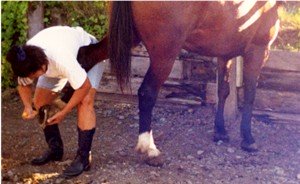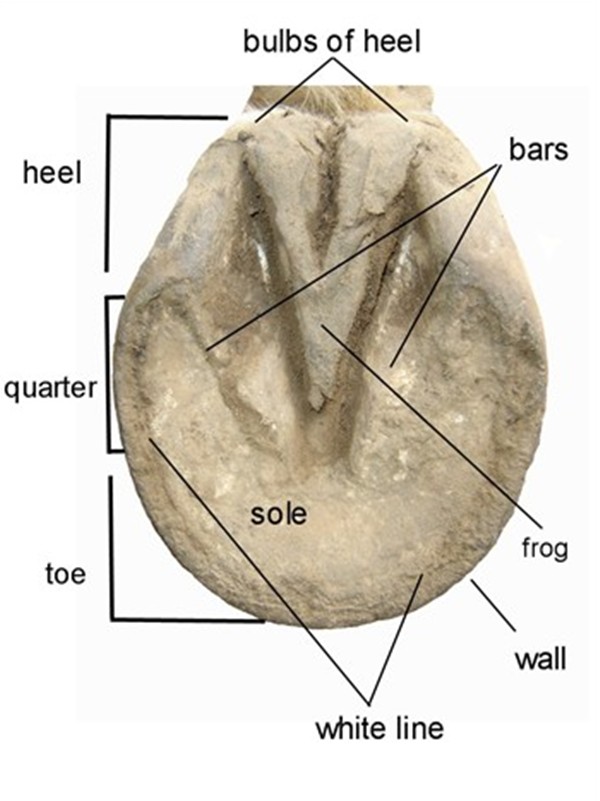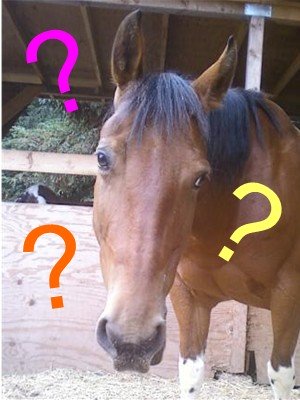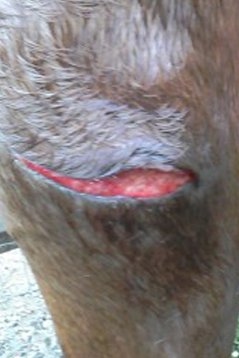Thrush in Horses: Prevention and Treatment
Healthy Feet for Healthy Horses
Thrush in horses is a condition that affects the frog of the horses hoof. Thrush can affect all 4 feet, but tends to show up more often in the hind hoofs. Fortunately most horses respond rather quickly to treatment.
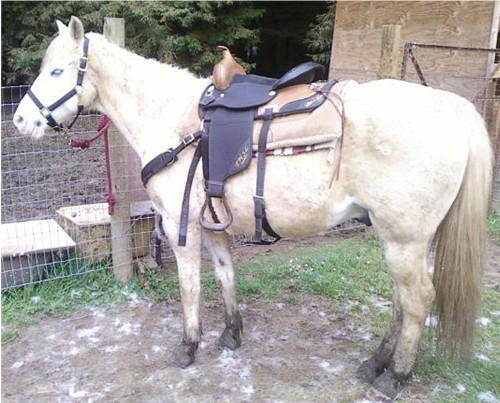 Mud aggravates thrush in horses
Mud aggravates thrush in horsesEquine thrush causes a degeneration of the frog in the horses hoof. As you may know, the frog acts as a cushion and shock absorber for a horses foot. But more importantly it plays a major role in blood circulation for the lower leg. With each step the animal takes, the frog is compressed and blood is forced upwards into the surrounding tissues of the foot.
The degeneration is caused by a secondary bacterial infection that eats away at the frog tissue, a very unhealthy condition for a horses health and soundness. This happens when horses are left standing in wet conditions for too long. It can be from filthy stalls, muddy paddocks or wet marshy pastures. Thrush can also take hold in a horse hoof that is not picked clean regularly.
If the frog is significantly damaged, your farrier may use a bar shoe to help aid in the regrowth of the frog. This is done after the bacterial infection has been stopped. In severe cases the entire diseased frog tissue must be surgically removed.
Signs of Equine Thrush
The first indicator of thrush in horses is a very foul odor. The underside of the hoof that is affected will be softer than normally expected and blackened with dead hoof tissue. When the hoof is picked clean the blackened portions will be crumbly and fall away, leaving a kind of moist chalky white material behind.
Treating Horse Thrush
The first thing to do is remove the horse from the wet conditions. The hoof should be gently picked clean with a hoof pick and an astringent applied to the affected area. There are several over the counter thrush remedies available. If you use them, follow the instructions on the label.
Here on the Northern California coast, we suffer a 6 month rainy season. Dry ground can be hard to find as everything turns to mud. I have found that a 50/50 mixture of bleach and water applied to the hoof twice a day with a spray bottle will kill most thrush bacterial infections. It's an inexpensive fix.
Luckily hoof thrush is easy to spot and easy to treat.
Horse Buying Guide
Buying a Horse - Sage advise to help you make your first horse purchase with out getting taken advantage of by less than honest sellers.
Bone Spavin

Learn to recognize Bone Spavin before you purchase a horse or how to manage it in a horse you already own.
This information is written for the horseman to better understand and cope with the variety of disease and injury that can occur during the course of horse ownership. Always consult with your Veterinarian regarding the care and treatment of your equine.
